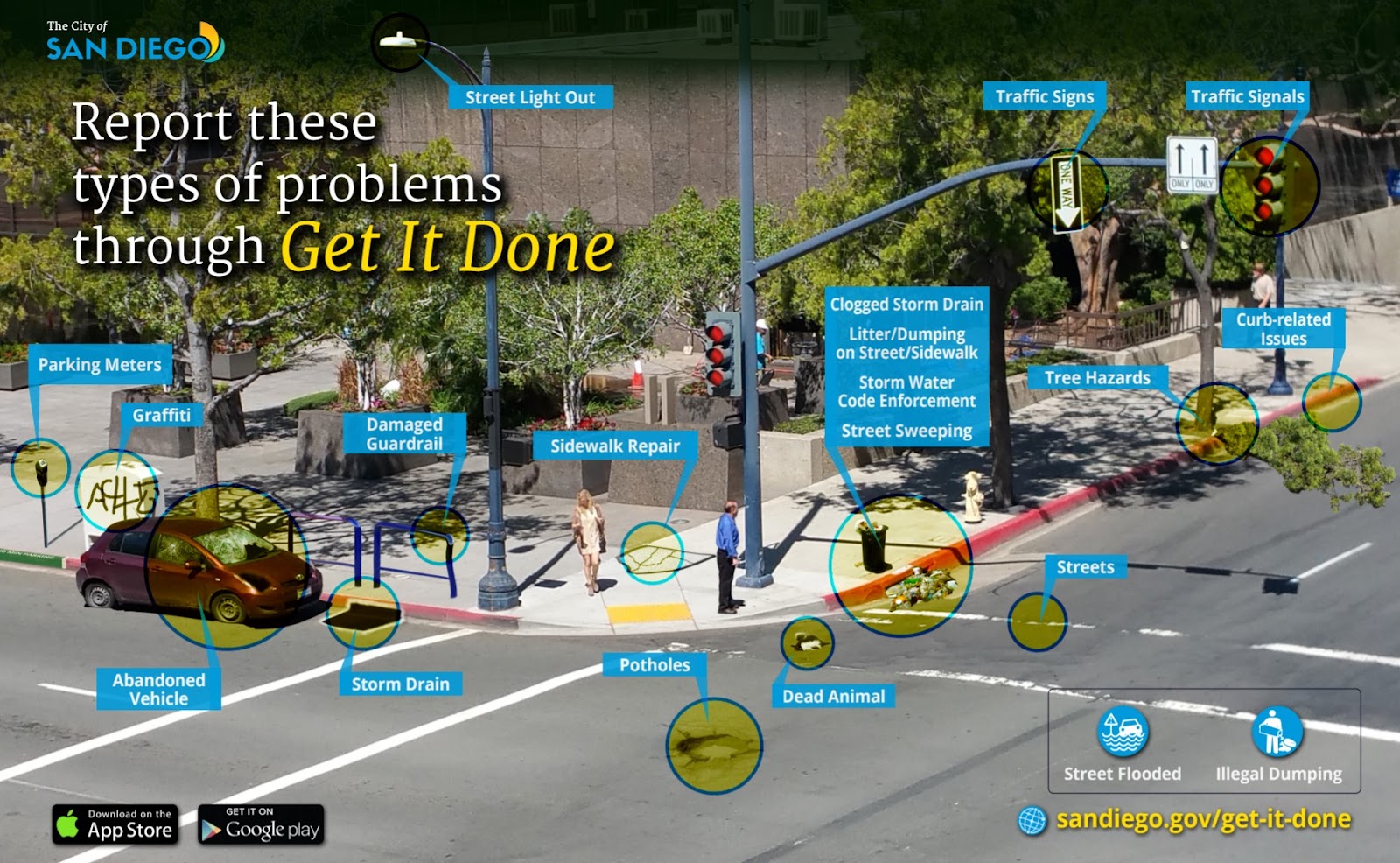Get It Done
- 8
- 7 min to read

About the city. With a population of about 1.4 million, San Diego is the second-largest city in the state of California and the eighth-largest city in the USA. A city of this size should have a dedicated communication channel for residents to report non-emergency issues such as potholes, street lamp repairs, illegal landfills, and graffiti. However, unlike most major US cities, San Diego did not have a centralized process or system before 2016 to allow residents to report these types of problems.
Goal
The aim of the project is to engage with residents needing to report non-emergency issues and solve them.
Implementation period. The project was launched in June 2016.
Fact
-
In 2015 the City of San Diego Resident Survey found that most residents prefer to report problems through digital means (a website or mobile application) rather than making phone calls.
-
In 2016, the lack of a dedicated 311 system almost led to a crisis in the city’s 911 call centre, because the large volume of calls made it difficult for 911 dispatchers to distinguish between life-threatening and non-priority situations.
Solutions
San Diego’s administration realized that it needed a system that could effectively solve non-emergency problems in the city, so in May 2016, San Diego conducted a pilot project of the Get It Done application based on Salesforce and a case management solution with the Department of Transportation and Storm Water (TSW). Their aim was to come up with a technology-driven, resident-centric solution that would allow access to the city’s non-emergency services and information anywhere, anytime, and on any device. Just a few months later, the city was encouraged by the results of the pilot project that in July 2018 they funded and launched a full-scale version of the solution, which included key departments such as the Environmental Services Department (ESD), Development Services Department (DSD), Public Utilities Department (PUD), City Clerk, and others. With this expansion, the Get It Done-Digital 311 solution has replaced five ageing legacy systems and provided a standardized and more collaborative approach to manage and process service requests from residents across 8 departments.
Residents can download the app or go to the website to upload photos of the problem, enter details about the problem, and then submit their requests. The GIS-based geotagging feature helps create a user-friendly interface, providing the city with enough information to correctly direct and assign requests. The self-service web portal allows residents to view their service requests on a map that includes status information and notes, allowing residents to track their request from entry to resolution. In addition, the system has an established feedback mechanism that allows residents to rate their experience, as well as provide specific feedback to the Department responsible for resolving the issue.
The City of San Diego plans to expand the breadth and depth of services offered with Get It Done. Examples of suggested improvements include:
- Providing residents with a user-friendly process for requesting garbage and recycling containers, including the ability to pay for them online.
- Including specific service requests for the Public Utilities Department (PUD)
- Integrating data from the Internet of things sensors across the city to automatically create and verify requests.
Challenges
Council members claimed they were disappointed by the average response times for some types of complaints, especially for abandoned vehicles, which takes more than 23 days on average.
City staff said they will start analyzing response times to see where improvements can be made.
Team
The City of San Diego: the Department of Performance and Analytics, the Transportation and Storm Water Department and the Department of Information Technology; Deloitte company.
Timeline
- App usage has increased dramatically over time. The number of complaints rose from 45,000 in 2016 to 144,000 in 2017, then to 201,000 in 2018 and 362,000 in 2019 — or almost 1,000 a day.
- The app has been downloaded over 100,000 times. City officials estimate that there are 12,500 active users each month.
If you notice an error or inaccuracy in our editorials, please email [email protected] so we can look into it.
